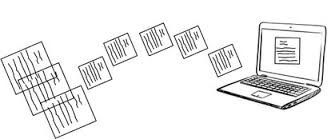
[fusion_builder_container hundred_percent=”yes” overflow=”visible”][fusion_builder_row][fusion_builder_column type=”1_1″ background_position=”left top” background_color=”” border_size=”” border_color=”” border_style=”solid” spacing=”yes” background_image=”” background_repeat=”no-repeat” padding=”” margin_top=”0px” margin_bottom=”0px” class=”” id=”” animation_type=”” animation_speed=”0.3″ animation_direction=”left” hide_on_mobile=”no” center_content=”no” min_height=”none”][optinlocker]
When you are tasked with creating process documentation from scratch, how do you go about documenting your work?
In my position as a Recruitment Processor, I often need to create documentation detailing how I complete tasks and reporting that are my responsibility. Sometimes, I’m creating the processes from scratch; and other times, I’m starting with an existing recruitment process, and adapting it to the client and type of recruiting involved in a specific project.
For me, documenting recruiting processes and reporting is a 3 step process.
First, I go through the entire process, so that I know everything involved.
Next, a notepad and pen are my best friends. I write down every step I take. In cases where there are two or more possible ways forward, I will go through option A from beginning to end, detailing all of the possibilities along the way. Then I go back and do the same for option B, option C, etc.
Finally, I will convert my written notes to a Word document. The process being documented determines the format I use. Sometimes, it’s full paragraphs for every step … other times it’s an outline format that works best. While creating the document I will often use screen shots to clarify anything I think could potentially be misunderstood.
Once my process document is complete, I ask someone with minimal to basic knowledge of the task to go through it step-by-step and make sure that it is correct and that it makes sense. I find that asking someone who has limited knowledge of how the process is supposed to work tends to bring to light any potential issues earlier in the editing process. Someone completely familiar with the process might skip over a potential problem, because they know what is supposed to happen next.
Final edit is completed using feedback from my co-workers who attempted the process using my documentation.
It can be a lot of work. However, for me, it’s worth it to know that if I have to leave one of my responsibilities in some else’s hands, they know everything they need to, to complete the process correctly. As much time as it takes me to document a process, it saves me even more if I have to be out of the office and someone has to cover for me. I don’t have a huge backlog of work to take care of when I get back to my desk; and, I have much more confidence that any work done in my absence is only going to require a cursory review … not have to be re-done entirely.
So, when you have to create documentation from scratch, how do you do it? Do you start at the keyboard, or with a pen and paper? What works best for you?
By Sherry Arlt | People Science Processor
[/optinlocker][/fusion_builder_column][/fusion_builder_row][/fusion_builder_container]
